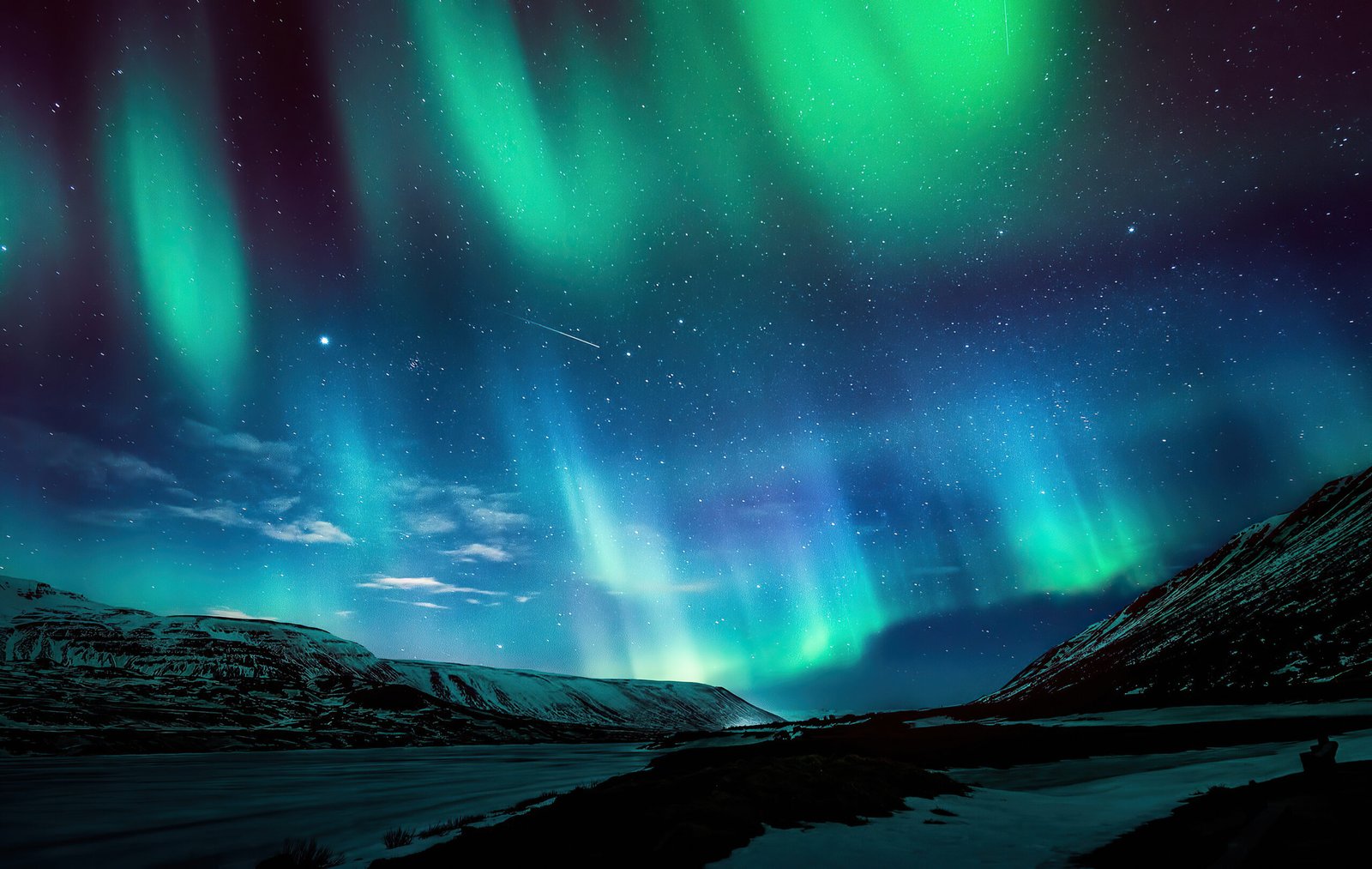In a breathtaking display of cosmic beauty, the Northern Lights—scientifically known as the aurora borealis—are expected to light up the skies across much of the continental United States tonight, June 1, 2025. This phenomenon, typically reserved for polar regions, is the result of a powerful G4-class geomagnetic storm, one of the most intense storms to strike Earth’s magnetic field in recent years.
According to the National Oceanic and Atmospheric Administration (NOAA), the storm was triggered by a high-speed solar wind stream and coronal mass ejections (CMEs) from the sun, which have interacted with Earth’s magnetosphere, creating widespread auroral activity. (Source)
Where and When to See the Lights
The aurora borealis may be visible tonight as far south as:
- Alabama
- Northern California
- Kansas
- Virginia
- Colorado
Regions with the highest visibility potential include the Midwest, Pacific Northwest, and Mid-Atlantic, thanks to forecasted clear skies.
The best viewing window is expected between 10:00 PM and 2:00 AM local time, when Earth’s magnetic field is most disturbed. If you’re in a region with limited light pollution and clear skies, you might be able to see green, purple, and red hues dancing across the horizon—even if you’re hundreds of miles south of the typical auroral oval.
Why This Storm Is So Unusual
The G4-class geomagnetic storm is ranked just below the most extreme classification (G5). Such storms are rare and can affect satellite operations, GPS navigation, and even electrical grids. However, they also create vivid auroras by exciting gases in Earth’s upper atmosphere.
This particular storm is notable for its low-latitude visibility, bringing auroras to locations that seldom experience them. Events like this happen only a few times each decade and often provide dazzling views well beyond the usual Northern Lights hotspots such as Alaska or Canada.
Can You See It With the Naked Eye?
In many cases, the aurora may appear faint or even invisible to the unaided eye—particularly in urban areas. However, your smartphone’s camera can often pick up colors and movement not seen with the naked eye. Using long-exposure modes or apps designed for night sky photography can significantly enhance your ability to capture the aurora.
For optimal viewing:
- Head to a dark-sky location away from city lights.
- Use aurora forecast apps such as My Aurora Forecast or check NOAA’s aurora dashboard.
- Allow your eyes time to adjust to the darkness—this can take up to 30 minutes.
Social Media Lights Up With Photos
Already, social media platforms like X (formerly Twitter), Instagram, and Reddit are flooded with photos and videos from people spotting the aurora in places like Ohio, Nebraska, and Oregon. Hashtags like #NorthernLights and #AuroraBorealis are trending across the U.S. as Americans share their awe at this rare celestial spectacle.
Some users have even reported viewing the aurora while standing in urban parks, thanks to the storm’s exceptional intensity.
A Teachable Moment
This event is not just a visual marvel—it’s also a chance to educate the public about space weather and our planet’s relationship with the sun. The NOAA Space Weather Prediction Center (SWPC) has issued advisories and educational resources to help people understand the science behind the aurora. (More here)
Teachers, science centers, and astronomy clubs across the country are using this opportunity to hold public events, virtual star parties, and telescope viewings to capitalize on the public interest.
Final Thoughts
Tonight’s Northern Lights display is a rare treat for millions of Americans, providing a sense of wonder and reminding us of the powerful forces at play in our solar system. Whether you’re an amateur photographer, a stargazer, or just someone who enjoys the night sky, this is an event you won’t want to miss.
Don’t forget to bundle up, head out early, and look to the northern horizon. You might just witness one of nature’s most magical phenomena—no plane ticket to Alaska required.

